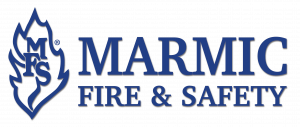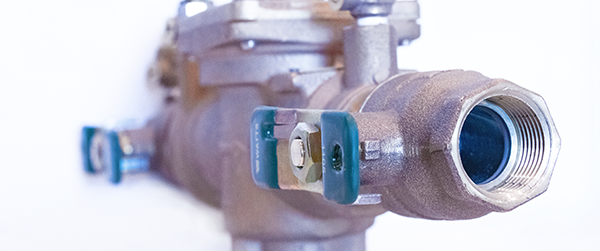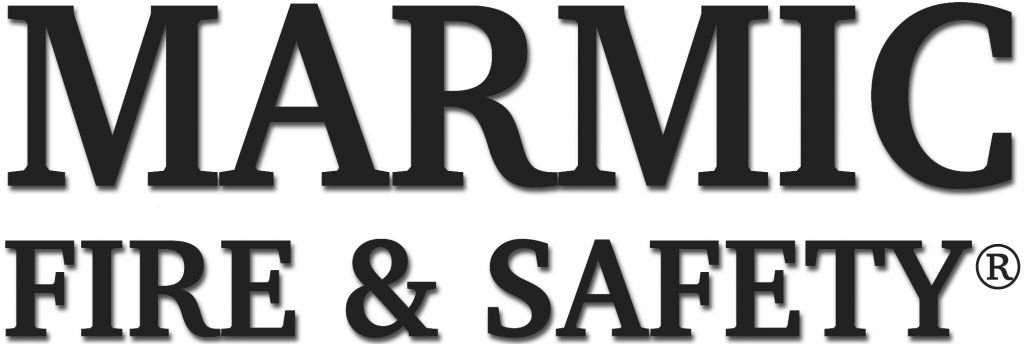What’s a backflow prevention device anyway?
Imagine it’s a hot summer day, and you’ve got a glass of cold lemonade in your hand as you sit comfortably in a lounger. Your 4-year old daughter runs out of the bushes and lands on your lap asking for a drink. You give her one. She takes a few sips, hands the glass back, then runs off to play in the yard again. Moments later, you start to take a sip but pause when you notice tiny, unidentified flecks in your drink. That’s when you realize they’re pieces of the bugs you didn’t know your kiddo was eating behind the bushes. Pushing aside concern over her eating habits and your parenting skills, now imagine having a device to prevent backwash.
That’s exactly what a backflow preventer, often called “backflow,” does in a fire protection setting.
Nowadays, any building with a fire sprinkler system has a backflow to protect the water main. When there’s negative pressure in the main that means there’s higher pressure in the pipes attached to it. The backflow isolates those pipes so the higher pressured water does not seep into the main. Why is that important? Because sprinkler pipes, like any pipes, corrode over time and turn the water in them to sludge which could contaminate your drinking water and that of your neighbors.
Are there different types of backflows?
Yes. The three most common types are:
RPZ: Reduced Pressure Zone
PVB: Pressure Vacuum Breaker
DCV: Double Check Valves
Each type has its own advantages, disadvantages and use cases. It’s important to know what type you need based on local codes and on what apparatus (fire sprinkler, lawn irrigation, etc.) it will be used. For instance, some backflows can be installed underground while others cannot. A fire protection company can explain the technical details of what you need for a fire sprinkler system.
Prices will vary among the different types due to levels of complexity.
When does a backflow have to be inspected?
Most Authorities Having Jurisdiction (AHJs) strictly watch over inspections since faulty backflows can become a public health concern. This is why backflow testing occurs annually in most jurisdictions. Typically, you’ll receive a notice from the water authority well in advance of the inspection due date. Once the inspection is completed, the paperwork is sent to the AHJ which may require you to repair any deficiencies. Non-compliance can result in fines and water shut off to your business or home.
How do I stay compliant and how much is backflow testing?
A fire sprinkler company can help you stay compliant by working with you to keep a regular inspection schedule which could depend on various factors. For example, backflow preventers located in pits or confined spaces are more hazardous and require the scheduling of two technicians: one technician to perform the inspection below ground and another to assist topside and monitor the technician below.
Testing costs will vary by location and complexity. Above ground backflows cost less than below ground due to the additional technician needed for below ground devices. A fire protection company can provide you with a quote taking all this into account. Additionally, the local AHJ may have certain requirements you have to meet.
Other than that there’s not much to it. The hardest part is scheduling the inspection. It’s harder getting your kid to brush her teeth!
What do I do if the backflow is malfunctioning?
Easy. Call a company that is licensed to do repairs in your area. They can provide a repair quote.
What else do I need to know?
Backflows are only one part of a fire sprinkler system that needs maintenance. To ensure the sprinkler system will function properly in the event of a fire you will need regular inspections which i often paired with inspection of the backflow but charged separately because they are separate tests.
Also, remember the sludge mentioned earlier? There’s a test for that as well. During a 5-year Internal Pipe Inspection, a technician literally cuts out a section of the fire sprinkler pipe to view the inside for blockages. Sometimes the sludge buildup is so extensive re-piping or, though rare, even a new system is needed.
At any rate, regular backflow testing is important for keeping the sludge out of your drinking water. After performing Internal Pipe inspections for years, we’ve seen how gross they are. They make your kid’s backwash bugs look pleasant by comparison.
****GET DISCLAIMER FROM COPELAND BROWN.


